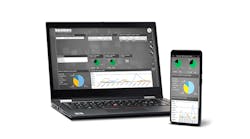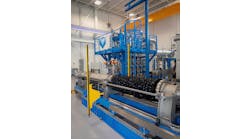|
W |
hoa! Cognitive dissonance alert! At the same time we are talking about the need to move to a higher levelthat is, from instrument engineering to process control engineeringwe are overwhelmed with complaints about field sensors. If we cant make the sensors and final control elements work right, what right do we have to say we want control over the plant floor, the process and the interfaces to the rest of the enterprise?
Is it any wonder that MES systems dont work well, and enterprise integration projects generally fail? The pH data going to a plant-wide control network isnt terribly valuable if the physical lag time in the loop (sensor to controller to final control element) is a half hour. No amount of fuzzy logic or Advanced Process Control will fix that.
Ive taught classes and written textbooks for more than 20 years, and the same examples and the same lessons get presented every time. The biggest complaints are that the application doesnt work right because it was designed wrong, or that the medium is too hard to measure with the technology. Somebody, anybody, please help me understand: if weve been measuring level and flow since before the pyramids were built, why we are still having problems with those applications?
David Spitzer, who co-wrote with me the Consumer Guide to ⦠series on flow and other field instruments, is busy working on a new guide, this time for non-contacting level gauges. He commented recently, Did you know that there are at least six different kinds of accuracy specifications in use in level measurement, depending on which one makes the vendors own product look the best?
One reason manufacturers publish specifications is to make their product look good, especially in comparison with other manufacturers products. This is not entirely to the benefit of the end user, of course.
In Europe, and in some parts of the rest of the world, measuring instruments accuracy claims are regulated by the government. This means, as David and I found when we reviewed the flowmeter specifications of nearly every vendor in the world, that European specifications are generally more aligned to reality than those published elsewhere. Japanese manufacturers specifications, we discovered, tend to be even more conservative than European manufacturers specs.
The problem is that without a clear worldwide standard governing specifications, it is nearly impossible for the average user to divine the obfuscation some vendors publish. And so it goes: stuff gets specified wrong and applied wrong. To illustrate the difficulty of trying to produce such standards in a meaningful way, for several years now, Ive been a member of an ISA standards committee trying to standardize vortex flowmeter laying length. We are still arguing.
But I think the problem does not entirely lie with fanciful vendor specifications. Perhaps we can attribute it also to the steady loss of institutional knowledge. There are lots of plants where nobody whos left from the last RIF (you know, Reduction In Force) knows why a particular flow or level instrument was selected and installed, or how the heck to do it again on a new application. Ive lost count of the number of flow, level, temperature, pH, ORP and conductivity applications Ive looked at that screamed, Fix me, an idiot did this!
This even applies to final control elements. Like Gene Giltners overflowing tanks (see the 1/25/05 entry in "Sound Off", the reason the tanks overflowed from time to time was the unintended consequence of someones quest to save a nickel or two on air to the control valves.
If we want to play in the big leagues, and move into the process of control, and into the MES and enterprise integration layers, some of us would do well to go back and concentrate on the fundamentals.



